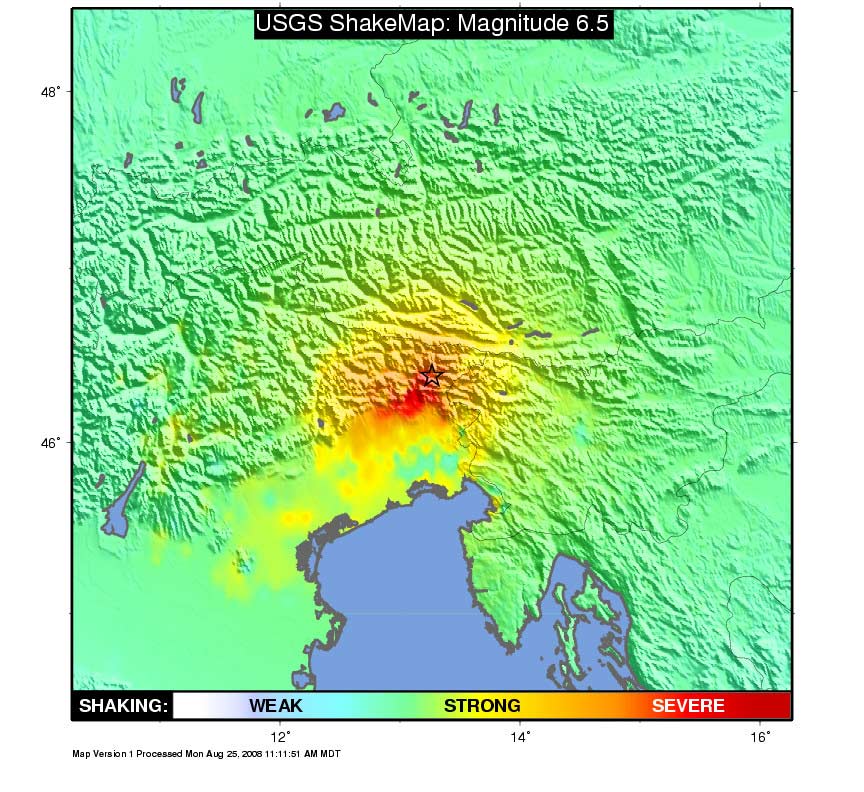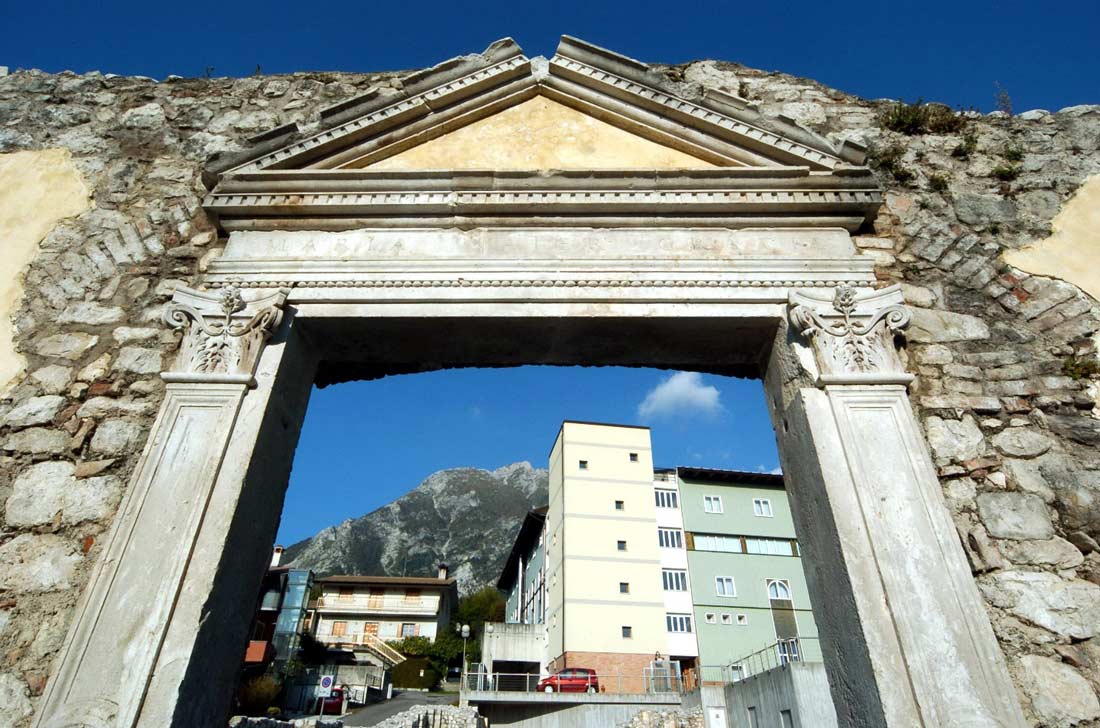Disaster resilience is improved by the iterative process of learning from recent catastrophes to reduce future risks. The knowledge gained from studying the damage done by earthquakes, for example, can be used to strengthen building codes; the experience gained in responding to them can inform the development of enhanced rescue and relief capacity. The first comprehensive set of seismic design rules in Italy, for example, was formulated in 1909 following the 1908 Messina-Reggio Calabria earthquake, in which 86,000 people died and 98% of the building stock in the area was heavily damaged.
Italian building codes have since been strengthened many times in response to lessons learned. The May 6, 1976, Friuli earthquake, for example, led to further enhancement of building codes but it also boosted efforts to identify distinct seismic zones within the country, and prompted a major step toward the formation of a national civil protection agency.
The Friuli Earthquake
On the evening of May 6, 1976, a series of shallow earthquakes struck south of Gemona del Friuli, a town in the foothills of the Alps in the extreme northeast of Italy. A foreshock was strong enough to cut power in Udine, the historical capital of the region, about 25 kilometers south of the tremor's epicenter and was quickly followed by a devastating Mw 6.5 mainshock (Figure 1), which was assigned an intensity of X , the highest intensity rating on the Modified Mercalli Intensity Scale, and is associated with this description “most ordinary masonry structures collapse; damage moderate to severe in many buildings designed to be earthquake-resistant.”

Ground motion from the earthquake could be felt in the outskirts of Rome and in France, Germany, Switzerland, Austria, and what was then Yugoslavia. An area of approximately 1,800 km2 experienced heavy damage, and 17,000 homes and many schools, churches, town halls, and factories were ruined (Figure 2). Most of Gemona del Friuli was destroyed, and the nearby towns of Buia, Colloredo, Folgaria, Maiano, Osoppo, Trasaghis, and Venzone suffered similarly; about 75 villages were severely damaged, including Breginj in what is now Slovenia. Nearly 1,000 people were killed, 2,400 people were injured, and 80,000 were left homeless.
More than 500 aftershocks, coming in two waves, continued to jolt the region over the next six months. The second wave began with a cluster on September 15, the strongest of which was nearly as large as the mainshock in May. These aftershocks caused further damage to buildings in the area, some of which had escaped harm in the earlier earthquake or had just been repaired following it.

Geological Background
The Friuli region's seismic history reflects its geologic complexity. It occupies one small part of Europe's eastern Southern Alps. In satellite photographs, the Alps appear as a crescent-shaped series of folds in the earth that stretch from southern France to eastern Austria. They mark Europe's collision with Africa. Some 100 million years ago Africa began moving northward, pushing before it what earlier had been the floor of a body of water (called by geologists the Tethys Sea) that was larger than today's Mediterranean Sea.
The unrelenting pressure of Africa's northward movement caused the seafloor's layers of sedimentary rock to bend and fold, and for layers of different ages to sometimes break and slide over each other to form a complex jumble of rock of various ages, some as old as 250 million years. Over the long stretches of geologic time, these stresses and deformations produced new breaks—faults—and other formations. More recently (by geologic time) they have been further altered and stressed by several periods of glaciation and other surface weathering.
Today the African Plate continues to push north against the Eurasian Plate, and the entire range of mountains that comprise the Alps—including Friuli's small corner of it—remains under constant tectonic stress. Now and then that stress is released—in the form of an earthquake.
Lessons Learned
The Friuli earthquake was a defining event in Italy's long seismic history. The presence near Trieste, relatively close to the epicenter, of a seismological center—Osservatorio Geofisico Sperimentale di Trieste (now called Istituto Nazionale di Oceanografia e di Geofisica Sperimentale, although it is is referred to by its original acronym, OGS)—resulted in this being the first Italian earthquake studied with modern scientific tools. Significantly, 1976 saw the launch of the Italian Geodynamics Project, the first institutionalized collaboration between geologists, seismologists, and engineers to mitigate seismic risk.
The initial response to the disaster was manifestly inadequate; dramatic television coverage daily highlighted the shortcomings of relief efforts. Public opinion shifted and following another major Italian earthquake in 1980 the Dipartimento della Protezione Civile (Department of Civil Protection) was created to prepare for earthquakes and other emergencies. The new agency brought together a significant body of professionals who, in addition to managing disaster relief, instituted systematic, science-based post-earthquake damage surveys that have since become a world standard.
It was with the Friuli earthquake that a comprehensive damage survey was carried out with the main purpose of assessing the economic loss. The survey provided detailed criteria for determining which damaged buildings should be repaired and which should be demolished and rebuilt. It evaluated every building in the epicentral zone of the earthquake and all damaged buildings in other stricken areas. Basically, this same systematic and uniform approach, with a few improvements, has been applied ever since. This continuing effort (which to date has assessed the effects of all the major earthquakes in Italy since Friuli) has produced a comprehensive database of more than 500,000 inspected buildings.
The widespread destruction of masonry buildings that the earthquake surveys found initiated the development of technical documents that subsequently have been used to retrofit such buildings and to design new, more resilient ones. The damage seen after the strong and shallow M6.2 Amatrice earthquake on August 24, 2016, however, was both a stark reminder of how many older structures there are in Italy that have yet to benefit from any such measures and a demonstration of how effective they can be.
The Friuli earthquake encouraged the development of modern building codes in Italy and initiated efforts to identify distinct seismic zones throughout the country. Before Friuli, Italian seismic zoning consisted of little more than drawing bullseyes around the location of earlier earthquakes. After Friuli, the seismicity of all Italian municipalities was reclassified according to stated scientific principles informed by the entire history of past earthquakes rather than the last major event. In 1984 this effort led to the first systematic seismic classification based on historical catalogs.
According to recent findings by the Istituto Nazionale di Geofisica e Vulcanologia, nearly 12% of Italy falls under the highest risk rating for earthquakes. The country is one of the most seismically active in Europe and over the last 2,000 years more than 400 destructive earthquakes have been documented; Italy needs all the resilience it can muster.
Editor’s note: This blog is based on an AIR Current article written for the 35th anniversary of the Friuli Earthquake by Dr. Paolo Bazzurro.
AIR’s Global Resilience Practice: Quantify and manage risks before disasters occur




